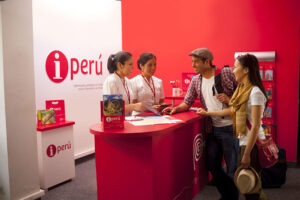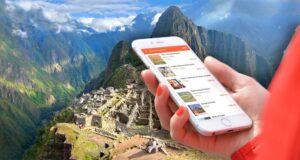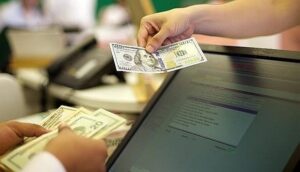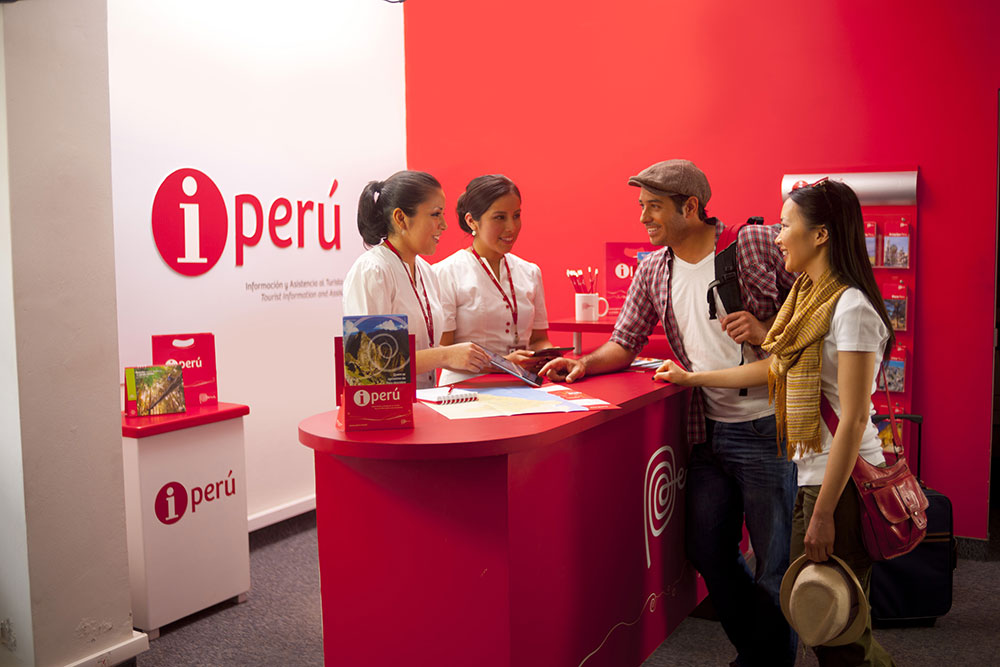Practical information about Peru
To move around the country
By plane
Due to the very mountainous topography of the country, the plane is an almost necessary means of transport in Peru. Some areas of the Amazon are only accessible by plane or by boat. Most cities have national routes, with the notable exception of Arequipa. The traveler must pay an airport tax at each departure (in Lima, $ 28.24 for an international flight, $ 5 for an internal flight). Also in Bolivia, the plane is an option to consider.
Public transport
For the local population, the bus is the king of transport in Peru as in Bolivia. The network of cities served is in fact very dense and the prices are very affordable. The vehicles are in relatively good condition, although there will be interest in choosing more comfortable buses. Trips start easily at 8 a.m., at 12 p.m., or at 24 p.m., and the traveler is sometimes a little shaken. The train is well developed we have from Puno to Cusco or to get to Machu Picchu
In the cities
Taxis: they are very numerous and cheap. Especially at night, prefer official taxis, that have a bright, fixed sign and not a simple sign. Public transport, certainly much more picturesque, requires a minimum knowledge of the city to be provided.

Distances throughout the country (while the crow flies)
Cuzco-Huaraz: 1515 km
Cuzco-Ica: 708 km
Cuzco-Lima: 1115 km
Cuzco-Pucallpa: 1629 km
Cuzco-Puno: 387 km
Cuzco-Tacna: 764 km
Cuzco-Trujillo: 1663 km
Cuzco-Tumbes: 2420 km
Huaraz-Ica: 708 km
Huaraz-Lima: 400 km
Huaraz-Puccalpa: 1240 km
Huaraz-Puno: 1716 km
Huaraz-Tacna: 1735 km
Huaraz-Trujillo: 336 km
Huaraz-Tumbes: 1094 km
Ica-Lima: 308 km
Ica-Puccalpa: 1143 km
Ica-Puno: 1005 km
Ica-Tacna: 1027 km
Ica-Trujillo: 856 km
Ica-Tumbes: 1614 km
Lima-Puccalpa: 840 km
Lima-Puno: 1316 km
Lima-Tacna: 1335 km
Lima-Trujillo: 548 km
Lima-Tumbes: 1306 km
Puccalpa-Puno: 2016 km
Puccalpa-Tacna: 2170 km
Puccalpa-Trujillo: 1388 km
Puccalpa-Tumbes: 2145 km
Puno-Tacna: 378 km
Puno-Trujillo: 1864 km
Puno-Tumbes: 2621 km
Tacna-Trujillo: 1883 km
Tacna-Tumbes: 2641 km
Trujillo-Tumbes: 758 km
Practice
local time
Peru is GMT-5, Bolivia to GMT-4. Warning: there is no change of schedule in winter or summer. There is 7 hours difference between Peru and France during the French summer, 6 hours during the winter.
Electricity
The current is 220 volts. No adapter needed
Office hours
Days and hours vary greatly from place to place, especially for tourist sites. Banks are open Monday through Friday from 9 a.m. to 6 p.m. and on Saturdays from 9 a.m. to 12 p.m., administrations are open Monday through Friday from 8:30 a.m. to 1 p.m. and 2 p.m. at 6 p.m., and embassies from 8 to noon on the same day. Stores are open Monday through Saturday (and often on Sundays) from 9 a.m. to 8 p.m. Tourist places are open all week. Some close on Sundays or Mondays: from 9 a.m. to 12 p.m. and 3 p.m. to 6 p.m.
Posts and Communications

Public phones work with coins. But the most common phones, especially outside major cities, are actually offered in stores or even in street stalls. They only work in coins. International communications are expensive and Holá Peru cards, which are beginning to reach the market, are lightening the rating. Prepaid cards, national or international, can be purchased at most supermarkets, and advertised with posters.
Media and Internet
El Comercio is the most analytical national newspaper in Peru. The Republic, Express, and Liberation are also serious. Other newspapers are closer to the gravel than to the information. In Bolivia, television broadcasts many soap operas and “people” programs. Internet cafes (Internet booths) are extremely popular in Peru and Bolivia. They are found in every corner of most cities, including small cities. The cost of one hour is about 70 cents.
How much ?
A coffee: 2 to 3 soles (0.5 to 0.7 euros)
A bus ticket: 1.50 sole (0.4 euros)
An average taxi ride: between 5 and 15 soles (1.5 to 3, 5 euros)
A stamp for France: 3.5 soles (1 euro)
A bottle of water: 2 soles (0.5 euros)
A double room in a 3-star hotel: between $ 50 and $ 110 (55 and 120 euros)
A double room in a 5-star hotel: between 165 and $ 300 (180 and 327 euros)
A full breakfast: 10 soles (2.5 euros)
A meal: 30 to 50 soles (9 to 15 euros) on average. From 3 soles, in a country house, to more than 150 soles in a luxury restaurant in Lima.
security in Cusco
Like many countries in Latin America, Peru, and, to a lesser extent, Bolivia is very peaceful. However, do not overstate the risk of theft or problems: if the danger can arise at any time, the vast majority of Peruvians have good intentions. With vigilance and the simple precautions that follow, we are likely to have a quiet stay. First, leave the maximum value in the hotel safe and avoid walking with objects of apparent value (watches and jewelry in particular). The camcorder and other cameras are stored in a discrete bag when not in use. In densely populated areas, carry the bag in front of you and not in the back. By car, close the door and close the window. Finally, avoid walking in the poorest areas, especially at night. Most flights are without violence; It is better to give what you have in case of aggression and contact the police. Telephone number in Peru: 105
Holidays and holidays
1 of January New Year.
January 18: a celebration of the anniversary of Lima
February 1 to 14: feast of the Virgen de la Candelaria in Puno
April 15-22: Holy Week in Ayacucho
May 1: Labor Day.
June 24: Inti Raymi Festival in Cuzco
July 28-29: Independence Day
August 15-22: Arequipa Festivities
August 30: Feast of Santa Rosa, Patroness of Lima
October: Procession in Lima of the Lord of Miracles, patron of the city
October 8: Battle of Angamos
November 1: Toussaint.
December 8: Immaculate Conception
December 24 and 25: Christmas
Economía y currency
Currency
The Peruvian currency is the new sun (they all say “soles”), which is worth about 25 cents. The US dollar is widely used and accepted almost everywhere, except for very small purchases. Be careful not to be mistaken: prices are shown in soles, except for a certain price (around $ 15), where we speak in dollars. There are bills of 200, 100, 50, 20, and 10, and coins of 5, 2, 1, 0.5, 0.2, and 0.1 soles. ATMs are easily found in cities and major credit cards are accepted in many hotels and restaurants. There is a lot of counterfeit money (bills and coins) in circulation.
Budget
The cost of living in Peru is three or four times lower than in France, even if some products or services can reach substantially equivalent prices. The Peruvian minimum wage is about 100 euros per month. The negotiation is very extended for the purchase of handicrafts, or even, in the low season, for hotels, tour operators, or car rentals. We discuss the price of the race before boarding a taxi.
Exchange

The euro is now widespread for exchange, even if the currency is the US dollar. Distributors also offer to withdraw money in dollars or soles. Do not change money on the street, except possibly in front of banks and tourist police offices: scams are frequent, especially in La Paz, and many fake tickets are in circulation.
Tips
Tipping is a normal part of life in Peru or Bolivia. In popular cafés, bars, and restaurants, the service is usually included. We can still leave a room. In restaurants, of a certain category, the customer adds the tip to the pen on the note, or even on the credit card ticket. 10% of the consumer price is a good average. In tourist areas, guides are sometimes paid a tip, sometimes, on the contrary, they are not allowed to receive it!
Activities to relax during your stay in Cusco Peru.

